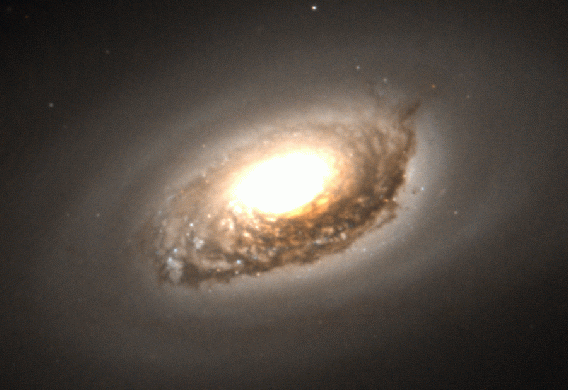

Kormendy (1993, in IAU Symposium 153, Galactic Bulges, ed. Habing and Dejonghe, Dordrecht, Kluwer, 209) discusses observational and theoretical evidence that some "bulges" of disk galaxies are built secularly out of disk material. Many bulges show photometric and kinematic evidence for disklike dynamics; I refer to these as "pseudobulges". The evidence includes
In these galaxies, the steep, r**1/4-law central brightness profiles belong not to bulges but to disks. That is, some galaxy disks have central brightness profiles that are much steeper than the inward extrapolation of an exponential fitted to the outer parts. These observations and numerical simulations of gas flow in nonaxisymmetric galaxies imply that high-central-concentration, flat components can be formed out of disk gas that is transported toward the center by bars and oval distortions. The simulations suggest further that some pseudobulges are built of disk stars that are heated in the axial direction by resonant scattering off of bars.
These effects are examples of important secular evolution processes at work in galaxy disks. Kormendy (1993) suggests that all Sc and later-type galaxies contain pseudobulges rather than classical (elliptical-galaxy-like) bulges, that early-type galaxies contain mainly classical bulges, but that exceptions exist. E. g., the center of the S0 galaxy NGC 7457 is very cold, so this is a pseudobulge.
University of Texas Astronomy Home Page
John Kormendy (kormendy@astro.as.utexas.edu)